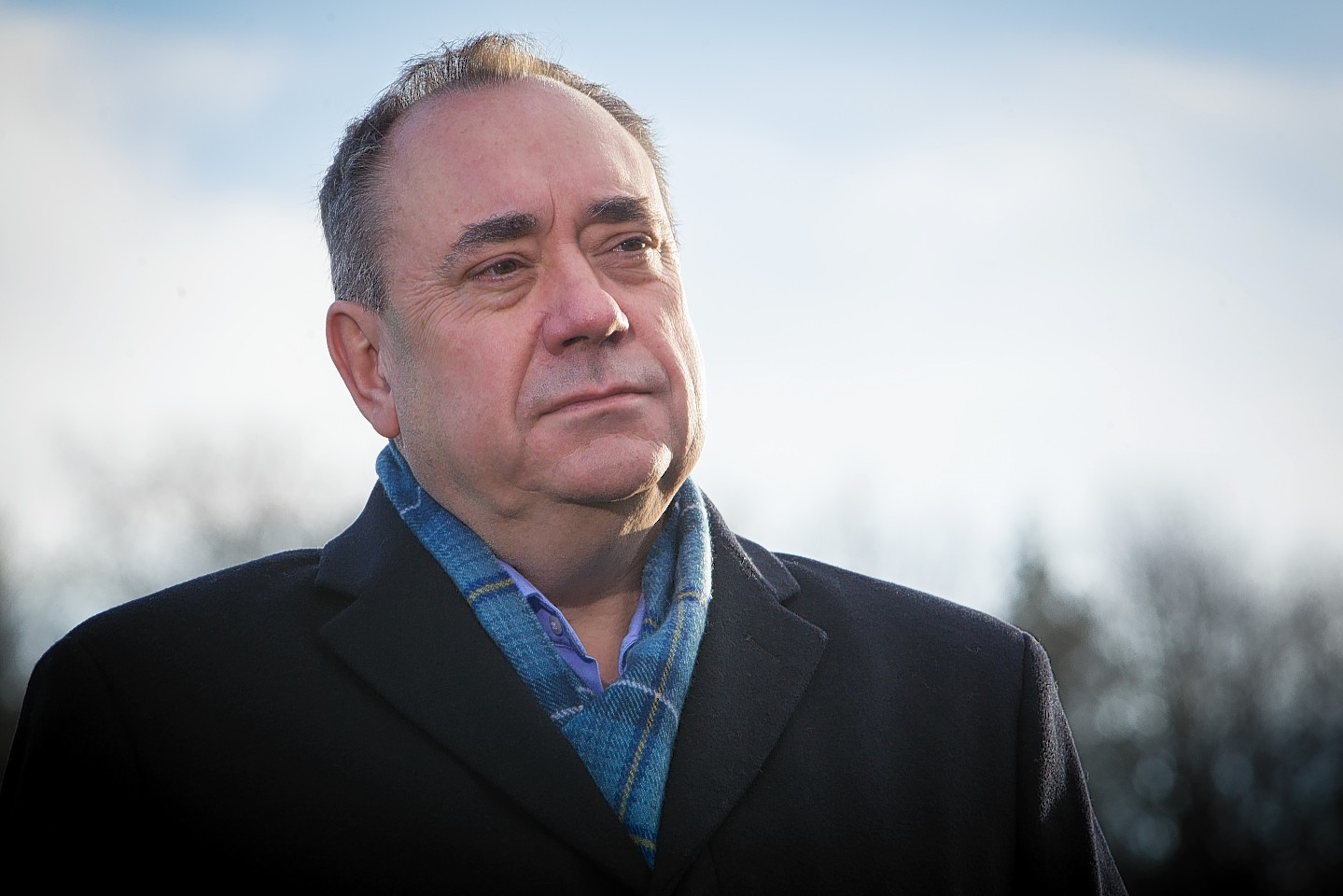It should have been a perfect day for Alex Salmond as he travelled through the Highlands, with referendum polls narrowing and more support swinging his way, but events would unfold in the next few hours to derail his campaign and change the course of Scottish history.
It was 10 days before the historic independence vote in September and the first minister and SNP leader was in Inverness.
He remembers vividly an “astonishing” outpouring of support for the Yes campaign on his Highland travels, but he had no clue that he was on the cusp of a shattering turning point later that day.
“It was a key moment in the campaign,” Mr Salmond told the Press and Journal.
“Obviously, it became clear as the campaign gathered pace – the BBC debate with Alistair Darling, the immense reaction we were getting in the street and the communities, and the enthusiasm – that it was going to be a huge poll that was narrowing and narrowing.
“I’d gone up the Moray Firth campaigning and had the most amazing day in Inverness.”
He witnessed what he described as astonishing scenes in the High Street – “people up lampposts and hanging out of windows” in an extraordinary show of support for his campaign.
Mr Salmond paused for thought and decided to steady himself amid the frenzied and heady atmosphere. He opted for a game of golf to clear his head and step away for a few hours.
“I went to Castle Stuart. I always take a pencil bag with my clubs just in case the opportunity arises, because I love golf.
“I was playing with this guy, an American, who played with hickory shafted clubs.”
As well as loving golf, Mr Salmond also has a fondness for Castle Stuart. He clearly enjoyed his visits to the highly-successful Scottish Open as first minister when it was staged at the course.
His opponent with hickory clubs would certainly have taken his mind off politics for a while – using hickory clubs is a fascinating subject in itself, with players adopting old-style or antique clubs for a more classical game.
Mr Salmond recalled: “We were playing the second at Castle Stuart, which is a par 5, and I got a phone call.
“He looked at me slightly disapprovingly as I had a mobile on the golf course, and quite rightly so. It’s not really something you should do, but under the circumstances…”
He answered the call and it was Geoff Aberdein, his chief of staff.
His top aide revealed that media mogul Rupert Murdoch had just tweeted that there was a “sensational” poll on the Scottish referendum out the next day. Mr Salmond gave instructions for him to find out its contents urgently.
He then turned his attentions to the more pressing business of negotiating the tricky third hole.
He said: “Anybody familiar with Castle Stuart knows it’s a short par 4 – you can have a good drive, but it just runs off to the left hand side of the green.”
As he steadied himself, mentally and physically, at a critical moment before a really tough shot, his phone rang again.
“So, I was concentrating on this really difficult shot, but I got another phone call. By this point I was getting a wee bit irritated as that was the second phone call and I’m having a game of golf, for goodness sake.”
It was Geoff Aberdein again.
“Geoff said it’s 51-49, according to the poll.
“I said ‘that’s great Geoff. It’s absolutely ideal’.
“I said ‘look Geoff, I’m in a game of golf – I’ll speak to you when I get back to the clubhouse. Put out the appropriate statement, I’m turning my phone off’.
“I shut the phone off and thought 51-49, that’s pretty close. That’s Yes up to 49, that’s the best poll of the campaign – absolutely fine, couldn’t be in a better place.”
Mr Salmond pressed on with his round of golf and completed it without further interruption.
But his chief of staff had been busy, in the meantime, and there were nearly 30 messages on the leader’s mobile by the time he reached the clubhouse.
“So, I said to Geoff again ‘what’s with all these messages?’.”
The reply was that Mr Salmond had misinterpreted his earlier messages: Yes was ahead in the poll by 51-49, not behind.
It was a shocking YouGov poll, with staggering news that Yes had surged ahead of No for the first time in the marathon campaign, sending shockwaves through Westminster of an imminent catastrophe for pro-Union parties – and maybe an end to the careers of some leaders.
It was a historic turning point in the campaign.
But far from dancing with joy and emotion, a deflated Mr Salmond simply replied with one word: “Damn.”
He said: “The reason I was disappointed is that we were ahead in the polls – which is obviously a good thing – but it was the timing.
“I knew as soon as we hit the front that the kitchen sink and most of the living room would be thrown at the Yes campaign by the No camp.
“One of our strengths was catching the complacency of the Westminster establishment. They thought they had it in the bag. They thought they were safe.
“I knew they would mobilise.”
And there was certainly just enough time left for them to react like cornered bears.
Within days, Messrs Cameron, Miliband and Clegg were heading north with a better deal to table.
And their big gun had been wheeled out – former Labour prime minister Gordon Brown stormed on to centre stage and “The Vow” was born, offering sweeping powers to Scotland if a No vote was returned.
This deadly combination of Mr Brown’s powerful, credible intervention and the obvious appeal of The Vow was credited with landing a fatal blow on the Yes campaign with just days to go before voters, and particularly the “don’t knows” or waverers, arrived at polling booths.
